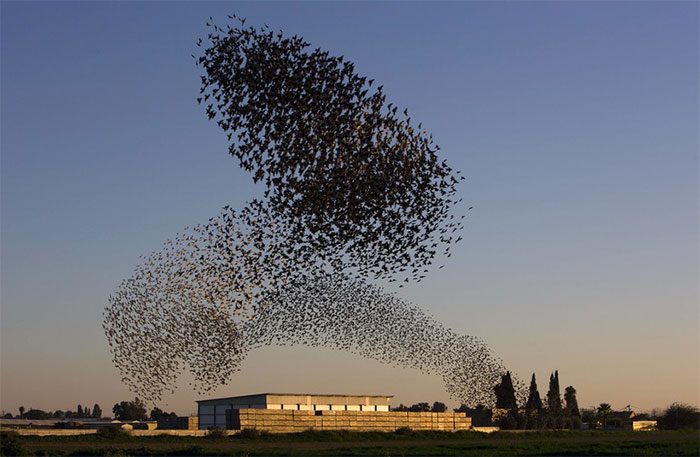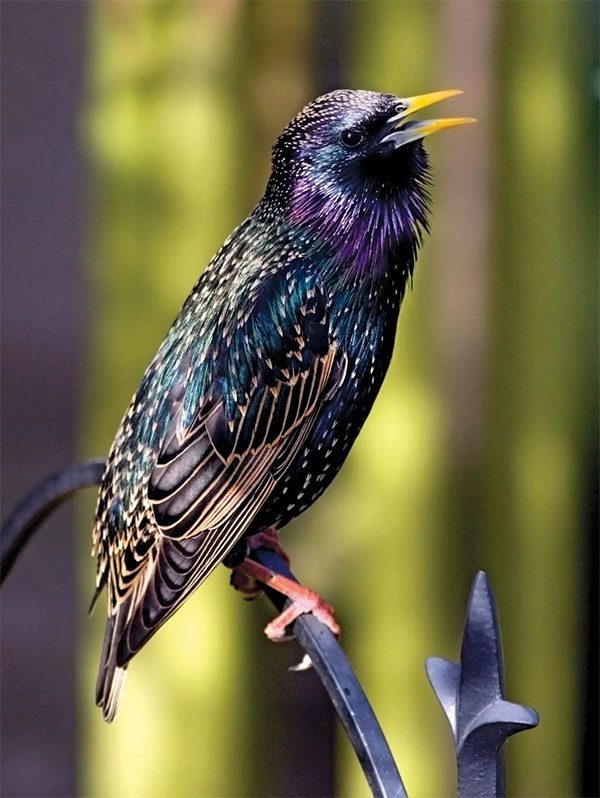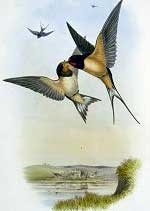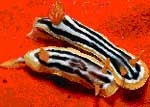As spring arrives and at sunset in the Wadden Sea National Park, southwestern Denmark, about 1.5 million green starlings stir the air by taking off in unison, soaring and dancing in synchronized waves. To this day, scientists have not yet explained how they can form such a magnificent and breathtaking aerial dance.

The diverse dance of green starlings is ever-changing, yet none are out of sync. (Photo: Theatlantic.com).
A Resting Ground
Southwestern Denmark, a country in Europe, is a paradise for snails, larvae, and fallen fruits. The Wadden Sea National Park is the largest natural reserve in Denmark, stretching from Ho Bay to the border with Germany, including three islands (Fanø, Mandø, and Rømø), the Blåvandshuk peninsula, the Varde River estuary, and numerous wetlands such as Tjæreborgmarsken and Ribemarsken.
The total area of the Wadden stretches up to 1,466 km2. Since 2010, this vast land has been designated as a sanctuary for birds, wildlife, and the most important wetlands in the world.
Within Wadden, approximately 500 species of flora and fauna are protected. However, what makes it famous is not the native species, but the migratory ones. On average, Wadden welcomes about 10 to 12 million migratory birds each year, with around 1.5 million being green starlings.
If the southwestern region of Denmark is a bird’s food paradise, then Wadden is the heart of this paradise. The Wadden coast features fertile mudflats.

The graceful and robust green starling. (Photo: Britannica.com).
Every time the tide recedes, numerous small, plump creatures get stranded, and they cannot escape the sharp eyes of the weary, hungry migratory birds. Naturally, the birds dive down to feast, nourishing their bodies before continuing their migration in search of suitable breeding grounds.
In addition to the abundant food supply, Wadden also features dense reed marshes. These provide perfect hiding spots for migratory birds, protecting them from predators like hawks and foxes. The combination of these two favorable factors—food and shelter—turns Wadden into the “international airport of birds.” Once they fly through here, there’s no reason not to stop for rest and nourishment.
Mesmerizing Dance
Green starlings are robust and charming birds. They have smooth plumage ranging from dark brown to black with a bluish sheen, live in flocks, and a single flock can consist of up to 600,000 individuals.
Every year, as spring arrives, Wadden welcomes about 1.5 million green starlings. Just as the sun sets, they all take off together, soaring high and synchronously swirling. A flock of green starlings forms a thick and dark cloud, so much so that they are referred to by locals as the “black sun.”
The cloud of green starlings moves and changes shape continuously. The sound of their flapping wings is loud, reminiscent of a roaring waterfall, while their aerial dance captivates all who watch.
“Green starlings spend the entire summer in Finland, Sweden, or Siberia. When the weather turns cold and the ground starts to freeze, they migrate south to warmer areas and never forget to stop at Wadden,” says Jesper Danneborg Voss, a tour guide at Wadden.
The duration of the green starlings’ stay at Wadden is quite long, typically lasting several months. During this time, nearly every evening, they stir the air with their loud and beautiful synchronized dance.
The “trigger” for the aerial dance is the appearance of predators. As soon as one green starling in the flock spots a predator where they intend to roost and signals, the entire flock will take off simultaneously, performing an impromptu dance formation, using the sound of their wings along with their massive numbers to overwhelm the threat.
After swirling enough to chase away the predator, the flock of green starlings lands and occupies the dense reed areas. They sleep standing upright, their feet gripping the reed stems, heart rates slowing and minds completely relaxed.
Typically, about 3 to 5 birds perch on a single reed. As the night air grows colder, they huddle together for warmth. In the morning, the flock calls out noisily while breaking apart into smaller groups to forage across the wetlands.
Since ancient times, the spontaneous dance of green starlings has fascinated humans. The Romans believed that the diversity in their “performances” reflected the myriad moods of the gods. Celtic mythology regarded green starlings as the embodiment of the goddess Brigid, the deity of healing and fertility.

A flock of green starlings flies over the Wadden. (Photo: Bbc.com).
Recently, scientists have been studying the spontaneous yet synchronized dance of green starlings. They hypothesize that the sounds and uniform movements are a way for them to “merge” hundreds of thousands of individuals into one, intimidating ecological threats. Predators become confused by the changing shapes of the flock, panicking and struggling to identify their intended prey, ultimately resulting in a failed hunt.
Moreover, scientists also hypothesize that the spontaneous dance of green starlings serves as a method of gathering for sleep. They want to ensure a large number of individuals can sleep together to avoid the cold, thus they soar high, swirling to call their flock.
While the exact reason for the synchronized flight at sunset of green starlings remains unclear, after spending a few months in spring at Wadden, they leave this paradise and continue their migration south to Belgium and England. The following year, as the north grows colder, they come back to Wadden once again.
In addition to green starlings, Wadden is also a temporary home to giant greylag geese, hawks, herons, swans, and migratory lapwings. Thanks to them and the green starlings, Wadden annually attracts birdwatchers from all over the world.





















































